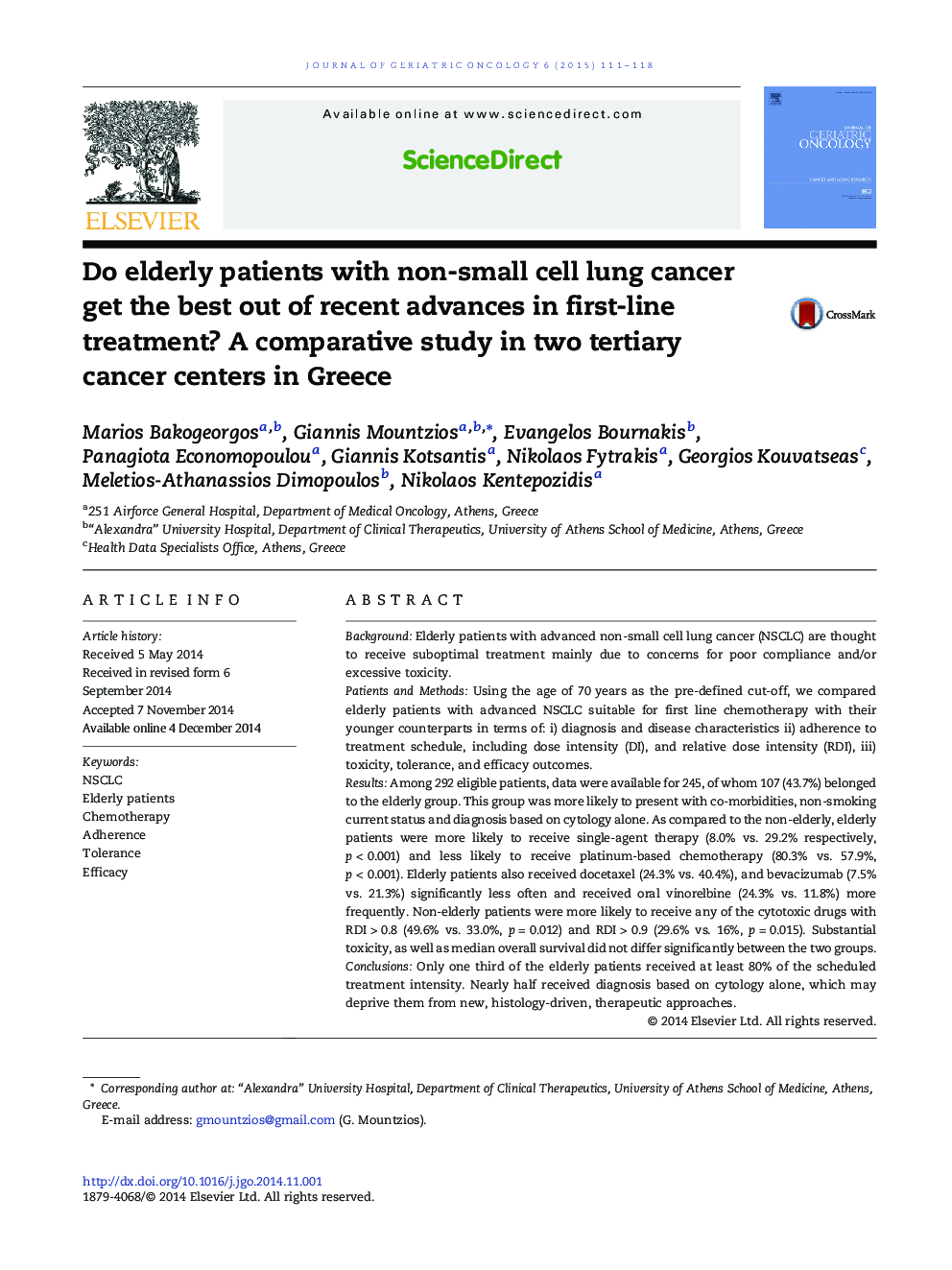| کد مقاله | کد نشریه | سال انتشار | مقاله انگلیسی | نسخه تمام متن |
|---|---|---|---|---|
| 1912485 | 1047180 | 2015 | 8 صفحه PDF | دانلود رایگان |
BackgroundElderly patients with advanced non-small cell lung cancer (NSCLC) are thought to receive suboptimal treatment mainly due to concerns for poor compliance and/or excessive toxicity.Patients and MethodsUsing the age of 70 years as the pre-defined cut-off, we compared elderly patients with advanced NSCLC suitable for first line chemotherapy with their younger counterparts in terms of: i) diagnosis and disease characteristics ii) adherence to treatment schedule, including dose intensity (DI), and relative dose intensity (RDI), iii) toxicity, tolerance, and efficacy outcomes.ResultsAmong 292 eligible patients, data were available for 245, of whom 107 (43.7%) belonged to the elderly group. This group was more likely to present with co-morbidities, non-smoking current status and diagnosis based on cytology alone. As compared to the non-elderly, elderly patients were more likely to receive single-agent therapy (8.0% vs. 29.2% respectively, p < 0.001) and less likely to receive platinum-based chemotherapy (80.3% vs. 57.9%, p < 0.001). Elderly patients also received docetaxel (24.3% vs. 40.4%), and bevacizumab (7.5% vs. 21.3%) significantly less often and received oral vinorelbine (24.3% vs. 11.8%) more frequently. Non-elderly patients were more likely to receive any of the cytotoxic drugs with RDI > 0.8 (49.6% vs. 33.0%, p = 0.012) and RDI > 0.9 (29.6% vs. 16%, p = 0.015). Substantial toxicity, as well as median overall survival did not differ significantly between the two groups.ConclusionsOnly one third of the elderly patients received at least 80% of the scheduled treatment intensity. Nearly half received diagnosis based on cytology alone, which may deprive them from new, histology-driven, therapeutic approaches.
Journal: Journal of Geriatric Oncology - Volume 6, Issue 2, March 2015, Pages 111–118
